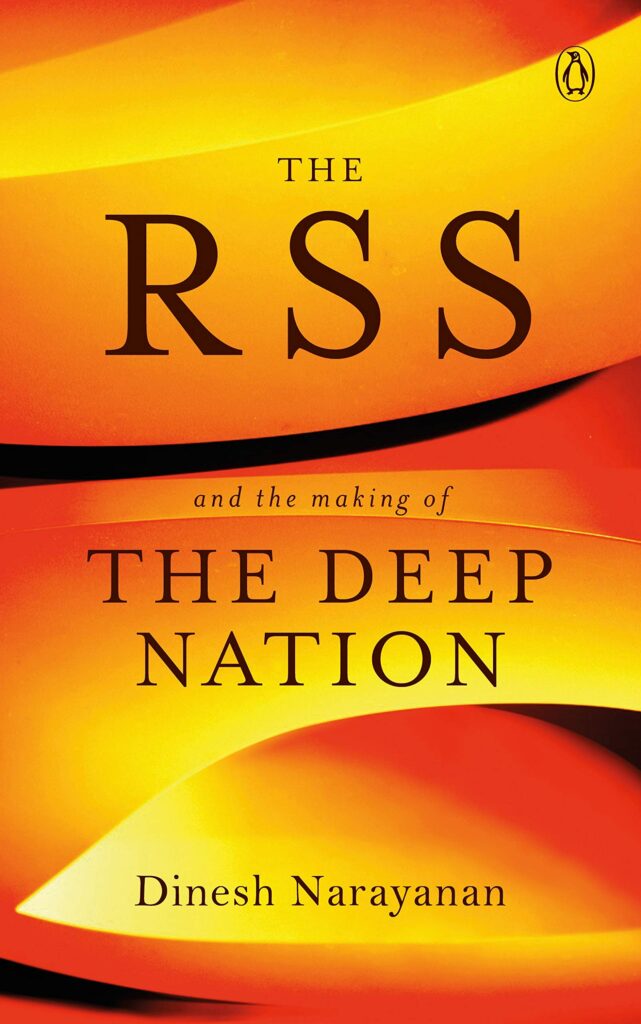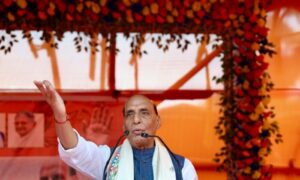
Chapter 3 : The God Of Power
The summer of 1983 in India was rather somnolent until it was enlivened by Kapil Dev and his band of intrepid cricketers who beat the West Indies, the reigning kings of the game, to bring home the Cricket World Cup. RSS sarsanghchalak Balasaheb Deoras, a keen follower of cricket, would have been elated. India was on top of the
world after all. In a private conversation, a senior RSS leader said Deoras often held forth on the nuances of the game. The leader also enthusiastically reeled off names of Indian cricketers who were swayamsevaks.1 That summer, however, Deoras was about to take guard in a far more perilous game.
An RSS pracharaks’ camp had just ended in Allahabad. Deoras was having a fireside chat with pracharaks when he suddenly asked: ‘Suna hai ki Ayodhya mein mandir pe taaley lage hain (I heard the temple in Ayodhya is locked).’ The pracharak in charge of the area stood up and replied in the affirmative. Balasaheb thought for a moment and asked loudly, ‘Kab tak rahenge? (Till when will the locks remain?).’ It was classic Deoras. He had just sent out a call to action without really spelling it out. It was over to them now.2 It is unlikely that Deoras had not thought about the consequences of his decision. He was extremely careful about using the RSS for campaigns and was conscious of the energy required to run agitations and the and the resources the organizations would need to deploy. He was certain that whatever be the situation, no campaign was worth affecting the organization’s work. It was possible to entrust some people to build public campaigns that would not strain the core RSS, but putting the entire organization at risk was not a gamble he would take. He was particular that the Sangh did not deviate from its ultimate goal of creating a Hindu society that would react reflexively.3 Those who knew him say he was acutely aware of the political impact the move would have, as well as the risks. The demolition of the Babri Masjid in 1992 ripped apart the delicate fabric of the Indian nation. Deoras was about to sacrifice the relationships and social capital he and his colleagues had built while in jail during the Emergency. The campaign would eventually turn out to be pyrrhic in terms of its social, economic and political costs, not to mention lives lost in riots and conflicts.
On 6 December 1992, hordes of kar sevaks (volunteers) climbed atop the domes of the mosque and brought it down within hours. It appeared like a crowd that gradually worked up a frenzy which ultimately broke through the scaffoldings surrounding the structure (there was work going on around it). Whether the precise act of demolition was planned or not, it is certain that the weight of months-long campaign and the charged speeches that were being
delivered had the congregation emotionally primed to wreak destruction. The Sangh Parivar’s collective leadership had willed the crowd into believing that a historic wrong was being righted and a social architecture was being rearranged.
Girilal Jain, former editor of the Times of India, wrote in the RSS publication Organiser:
The structure as it stood represented an impasse between what Babur represented and what Ram represents … In fact, in my opinion, no structure symbolized the Indian political order in its ambivalence, ambiguity, indecision and lack of purpose, as this structure. The removal of the structure has ended the impasse and marks a new beginning 4.
Recalling Jain’s article in 2010, on the eve of a high court verdict on the Ayodhya land dispute, columnist Swapan Dasgupta wrote in the Telegraph that Ayodhya was not the equivalent of the storming of the Bastille. Both the votaries of Hindutva and the beleaguered defenders of the Nehruvian order were united in viewing the demolition as
a point of rupture. For the former, the change would herald a Hindu reawakening; for the secularists, it threatened to destroy India’s pluralism and transform the country into a de-facto confessional State. Both sides of the confrontation, it would now seem, were guilty of hype. India wasn’t transformed into a Hindu Pakistan and the Constitutional edifice established in 1950 remained strong and intact. To borrow A.J.P. Taylor’s description of the 1848 revolution in Europe, the Babri demolition was a turning point in Indian history when history refused to turn 5.
The campaign was never intended to be the formula for Hindu revival in the religious sense. It was an experiment—spectacularly successful in hindsight—in consolidating Hindus politically. The purveyors of the strategy could never be sure of its efficacy, but it was worth a try; a Hindu consolidation that went beyond mere political benefits. The campaign was a political exploration and the demolition, a statement of power.
‘For some, the temptation of power is supreme,’ thus opens the ‘Report of the Liberhan Ayodhya Commission of Inquiry’. ‘The usual means for acquiring power is through politics. There is always an urge and quest to use politics for acquiring power and for one’s own purpose—nothing matters beyond political desirable results, however achieved. In the process of acquisition of power the consequence of the process on the institution, the nation,
individual and the society as a whole does not matter. Life itself becomes politicized,’ the commission observed in its percipient opening remarks. The commission said that cadres and leaders, both national and local, of the RSS, Bajrang Dal, VHP, BJP and Shiv Sena actively or passively supported the demolition. ‘In the process all acts were directed for or to acquire the political power and thereby achieve the politically desirable results,’ it said.6
In his seminal work, Crowds and Power, Nobel laureate Elias Canetti interprets the destruction of representational images as the destruction of a hierarchy which is no longer recognized. ‘It is the violation of generally established and universally visible and valid distances.’7 In the case of Babri, the hierarchy was long gone, but the Sangh Parivar considered the mosque a symbol of a tyrannical legacy enjoyed by Muslims as political privilege even in independent India. That the Babri Masjid was standing was clear evidence of an appeasement that helped tilt the balance in such a way that it frustrated the majoritarian claim on power.
The Sangh Parivar considers the Babri mosque demolition the rightful culmination of four and half centuries of struggle by the Hindus to regain a tiny speck of land believed to be the birthplace of Ram, God and hero of India’s most famous and revered epic, the Ramayana. Many Parivar leaders consider the demolition unfortunate but necessary. Uma Bharti, the firebrand BJP leader who is alleged to have egged on the kar sevaks on that fateful day, said in a television interview:
Let me make one thing very clear. We don’t have any regrets about the razing of the Babri masjid. I would have accepted it with pride if I had had myself brought it down. But I did not because I was far from there. Even though we were preparing for the kar seva, none of the leaders who were present there had any idea this would happen.8
(‘Excerpted’ with permission from Penguin Random House India)
[the_ad id=”22718″]


















